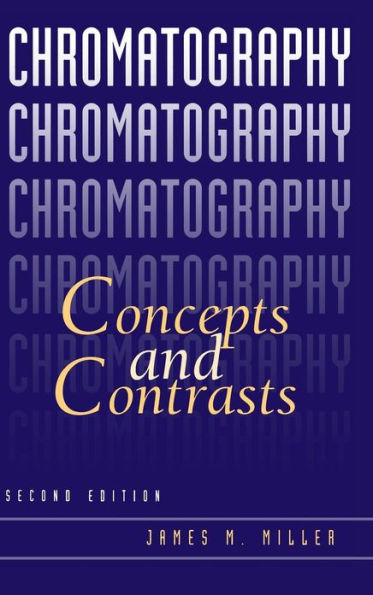Table of Contents
Preface to Second Edition.
Acknowledgments.
Preface to the First Edition.
Symbols, Abbreviations, and Acronyms.
1 Impact of Industrial and Government Regulatory Practices on Analytical Chromatography.
1.1 Locus of Chromatography in Chemical Industry.
1.2 Governmental Organizations.
1.3 Nongovernmental Agencies.
1.4 Standards, Calibration, and NIST.
1.5 USP and Other Pharmacopoeias.
1.6 International Guidelines for Analytical Laboratories.
1.7 Final Comments.
References.
2 Introduction to Chromatography.
2.1 Brief History.
2.2 Definitions and Classifications.
2.3 Summary.
References.
3 Band Broadening and Kinetics.
3.1 Configurations of the Stationary Phase.
3.2 Rate Theory.
References.
4 Physical Forces and Interactions.
4.1 Intermolecular and Interionic Forces.
4.2 Size Exclusion—Molecular Sieving.
4.3 Some Models.
References.
5 Optimization and the Achievement of Separation.
5.1 Kinetics and Zone Broadening.
5.2 Thermodynamics and Zone Migration.
5.2 Achievement of Separation.
5.4 Optimization of Separations.
References.
6 Comparisons Between Chromatographic Modes.
6.1 Gas Chromatography Compared to Liquid Chromatography.
6.2 Supercritical Fluids and Supercritical Fluid Chromatography.
6.3 Reduced Parameters.
6.4 Columnar and Planar Configurations.
References.
7 Gas Chromatography.
7.1 Early History, Theories, and Classifications.
7.2 Instrumentation for Capillary GC.
7.3 Instrumentation for Packed-Column GC.
7.4 Stationary Phase.
7.5 Temperature Effects.
7.6 Special Topics.
7.7 Summary and Evaluation.
References.
8 Liquid Chromatography in Columns.
8.1 Introductory Classifications.
8.2 Classification of HPLC Modes.
8.3 Instrumentation.
8.4 Reversed-Phase Method Development and Optimization.
8.5 RP-HPLC Alternatives for the Pharmaceutical Industry.
8.6 Preparative LC.
8.7 Special Topics.
8.8 Summary and Evaluation.
References.
9 Quantitation: Detectors and Methods.
9.1 Detectors.
9.2 Data Acquisition and Processing.
9.3 Quantitative Analysis.
References.
10 Chromatography with Mass Spectral Detection (GC/MS and LC/MS).
10.1 Basics of Mass Spectrometry.
10.2 Gas ChromatographyrMass Spectrometry.
10.3 Liquid ChromatographyrMass Spectrometry.
10.4 Other Hyphenated Methods.
10.5 Summary.
References.
11 Liquid Chromatography on Plane Surfaces.
11.1 Paper Chromatography.
11.2 Thin-Layer Chromatography.
11.3 Other Topics.
11.4 Literature Summary and Applications.
References.
12 Qualitative Analysis.
12.1 Retention Parameters.
12.2 Other Methods of Qualitative Analysis.
References.
13 Capillary Electrophoresis and Capillary Electrochromatography 365
13.1 Principles of Electrophoresis.
13.2 Zone Electrophoresis.
13.3 Capillary Electrophoresis.
13.4 Capillary Electrochromatography.
References.
14 Sample Preparation.
14.1 Extraction.
14.2 Dialysis.
14.3 Derivatization.
References.
15 Special Applications.
15.1 Multidimensional Chromatography.
15.2 Biological Applications.
15.3 Chiral Separations.
15.4 Other Topics.
References.
16 Selection of a Method.
16.1 Methods of Attack.
16.2 The Internet.
16.3 Experimental Approach.
16.4 Summary.
References.
Some Internet Web Sites of Interest to Chromatographers.
Appendix A ICH Glossary.
Appendix B.
Index.






